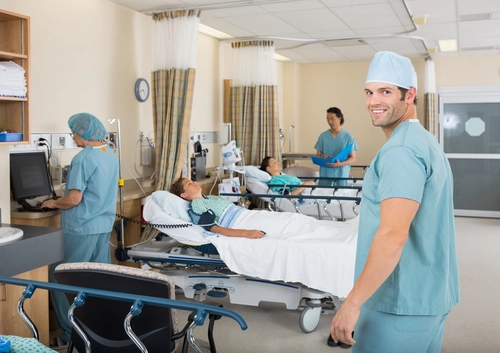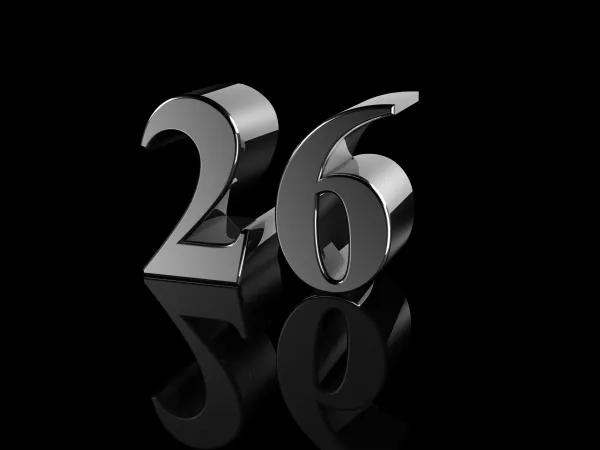Focus on Site of Service, Code Sets to Ensure Modifier 26 Success

Here’s why many modifier 26 encounters occur off-site.
When using modifier 26 (Professional component), the old real estate adage often applies: Location matters most.
If your provider performs any service outside of the walls of your practice, you’ll likely need modifier 26. That’s not the only modifier 26 situation, however. If your provider doesn’t perform the technical component of a procedure, regardless of setting, the modifier will also come in handy.
We asked the experts to give us the 411 on modifier 26 in these frequently asked questions (FAQ). See what they had to say about when, why — and where — you should be using modifier 26.
When Should I Use Modifier 26?
CPT® designed modifier 26 for use when reporting services “that are a combination of professional and technical components,” explains Yvonne Bouvier, CPC, CEDC, senior coding analyst for Bill Dunbar and Associates, LLC, in Indianapolis, Ind. When your provider only performs the professional component of the service, modifier 26 tells the payer that you are only coding for that portion of the service, she says.
You should also use modifier 26 when the provider performs a procedure with both a technical and professional component in an off-site facility, in other words, “in a place of service other than the office,” says Barbara J. Cobuzzi, MBA, CPC, COC, CPC-P, CENTC, CPCO, vice president of the coding and consulting division of J. & S. Stark Billing & Consulting, Inc., in Shrewsbury, N.J.
If the provider performs a procedure in a facility owned by another party, you must use modifier 26 on your code[s]; the facility should report the same code[s] with modifier TC (Technical component) appended, Cobuzzi says.
Why Should I Use Modifier 26?
Failure to use modifier 26 when the situation calls for it means the payer will consider your practice the global provider of the service, and the payer will reimburse you the full fee.
Fallout: This coding could “result in payers requesting a refund for payment as the result of incorrect coding,” explains Bouvier. This practice could also put you on a payer’s radar for future claim scrutiny.
What Types of Services Might Need Modifier 26?
Any time your provider interprets a diagnostic study or test that utilized equipment owned by a separate entity, have modifier 26 at the ready.
Example: Your physician places a central venous access device with ultrasound guidance in the emergency department (ED) of the local hospital. Notes indicate the patient was a 29-year-old woman. On the claim, you would report 36556 (Insertion of non-tunneled centrally inserted central venous catheter; age 5 years or older) for the device implantation. Then, you’d report 76937 (Ultrasound guidance for vascular access requiring ultrasound evaluation of potential access sites, documentation of selected vessel patency, concurrent realtime ultrasound visualization of vascular needle entry, with permanent recording and reporting [List separately in addition to code for primary procedure]) for the ultrasound, with modifier 26 appended to show that you are only coding for your physician’s services, not the ED equipment.
Cobuzzi offers another example, from the world of obstetrics: An OB-GYN physician performs an ultrasound for a patient in the labor and delivery (L&D) department of the hospital because the patient has stopped feeling fetal movement. You would code this service 76811- 26 (Ultrasound, pregnant uterus, real time with image documentation, fetal and maternal evaluation plus detailed fetal anatomic examination, transabdominal approach; single or first gestation).
Explanation: Since the physician performed the ultrasound in the L&D, you must code the ultrasound with modifier 26 “even though the obstetrician is doing exactly what he does in the office,” says Cobuzzi.
There are also codes, mostly in the radiology section and medicine testing sections of CPT®, that are divided into professional and technical components, Cobuzzi says.
Some of these codes include:
How Do I Decide if I Need Modifier 26?
According to Bouvier, modifier 26 hotspots include services that occur in:
If the service occurs in one of the listed locales, modifier 26 might be appropriate. This is not a hard and fast list, however, and you can use modifier 26 for services that occur in any setting.
Should I Check What the Other Provider Is Coding?
Opinions vary. Many coders report that they typically trust the other party to file the code based on the documentation, with modifier TC appended. If the codes don’t line up, however, you might be getting a call from the payer. For this reason, Bouvier recommends checking with the TC provider to make sure the CPT® codes match.
You can do this by asking the other provider for a copy of its claim. “If there is a discrepancy, contact the other provider and discuss” the situation before filing the claim, Bouvier recommends.




